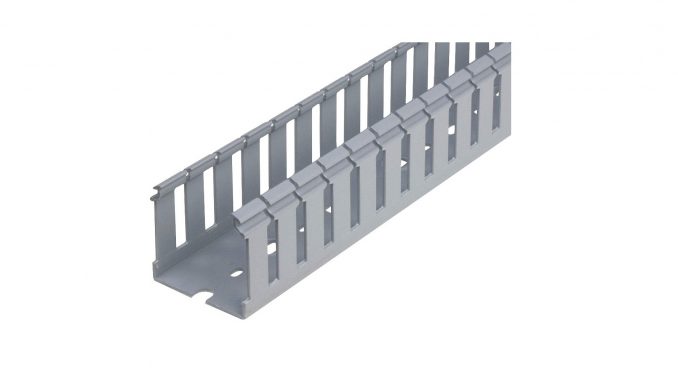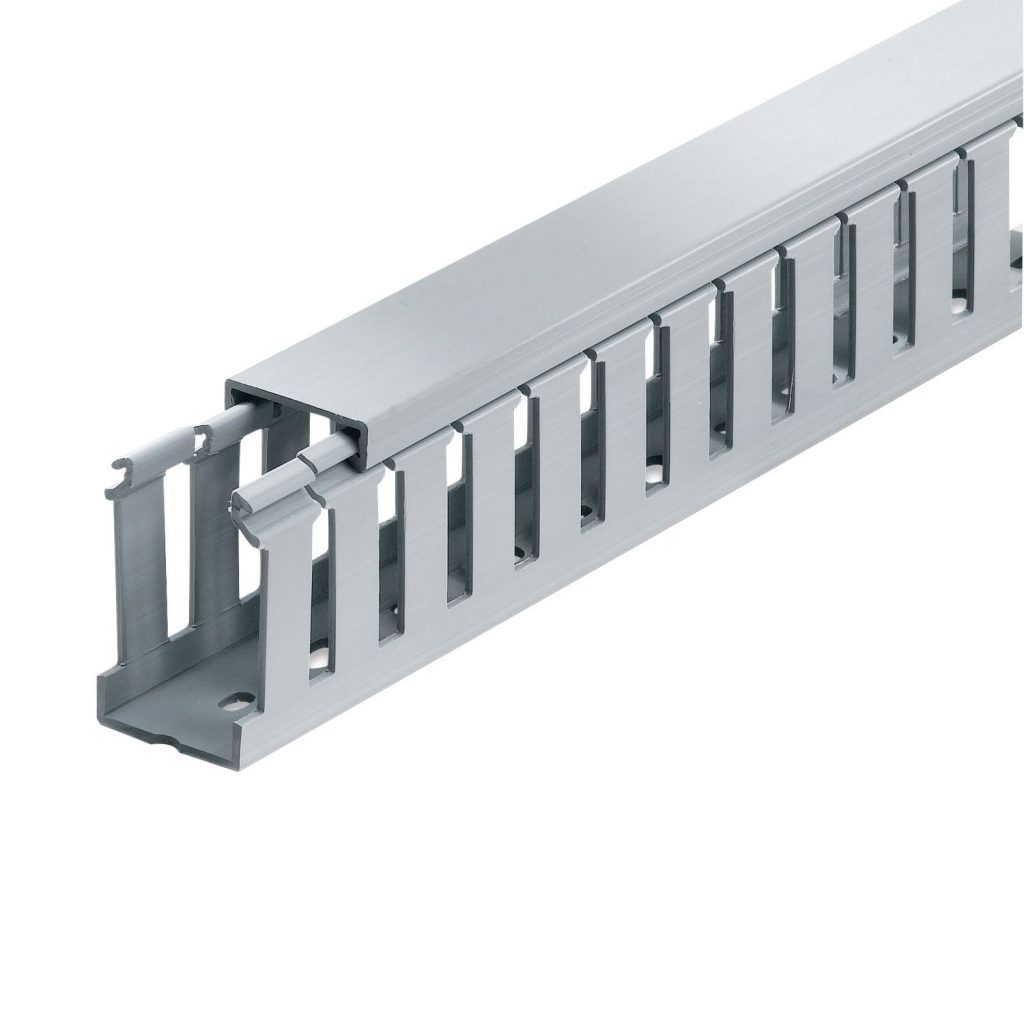
A Wiring Duct is a rigid rectangular tube that serves as a raceway for enclosed cables. The tray typically includes bonding clips, noise barriers, wire slots and cable ties for organizing wires within the enclosures.
Wiring Ducts are mainly used for easier rerouting and termination of enclosed wires. They also protect cables from external elements but, unlike costly NEMA-rated Wireways, do not offer enough safety against atmospheric contaminants.
TYPES OF WIRING DUCTS
A wiring duct has two general classifications:
- Slotted Wiring Duct is designed with slots or fingers along the side. The slots allow quick access to the cables within. Wires are generally easier to reroute and terminate when they are enclosed in a Slotted Wiring Duct.
- Slotless Wiring Duct is a solid tray without slots or openings. It is used to provide protection and support to cables that require no breakouts and are accessed infrequently.
The two classifications can be further broken down into 6 specific types of Wiring Ducts, each with its own particular use:

- Basic Wiring Duct is an inexpensive WD that meets the basic requirement for protection and wire enclosure organization.
- Solid Slot Wiring Duct is basically a slotless WD. It is used when cable protection is a high priority or in areas that do not require constant access to the wires inside.
- Open Slot Wiring Duct has a removable top cover and open slots for easy exposure of enclosed cables. This type of Wiring Duct works best for expansive or complicated systems that require cables to be rerouted at multiple points in each channel.
- Closed Slot Wiring Duct has standard-sized slots that each has a ridge halfway down its length. The ridges form a partitioned region along its slotted walls to add extra protection without totally blocking off access to the wired enclosure.
- Narrow Slot Wiring Duct comes with narrow slots suitable for smaller-diameter wires. The narrow slots provide more access points per square inch than ducts with standard-sized slots. They are often used for high-density wiring configurations and narrow terminal blocks.
- High-resistance Wiring Duct is made from specialized zero halogen and low-smoke materials for better protection against fires and other electrical hazards.
BENEFITS OF USING A WIRING DUCT
Wiring ducts are the simplest ways to maintain organized wires and add a layer of safety to your electrical system. In addition, these ducts offer other extra benefits:
- Minimizes distortions. In higher temperature environments, the tray deflects heat away from the enclosure, lowering chances of distorted and hazard-risk cables.
- Easy installation. Most wiring ducts come with adhesive backing or pre-drilled holes so they can be quickly held firmly in place, with minimal effort.
- Facilitates better maintenance. An organized system of cables, without spaghetti coils and messy bundles, promotes easy identification of faulty lines and therefore more efficient troubleshooting.
IN SUMMARY
A Wiring Duct is a simple and inexpensive way to protect and organize your cable enclosures. Using it for your home should be a no-brainer. It is relatively quick and easy to install, while offering long-term maintenance and safety benefits.

